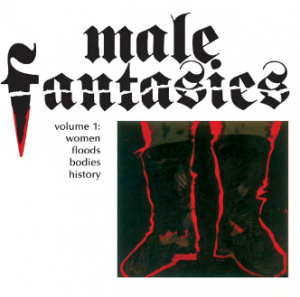I am re-reading Klaus Theweleit’s Male Fantasies (1977). I had it in book paper format, but someone ‘borrowed’ it, a long time ago, so my memory had grown hazy. Now it is available on the web. Re-reading is an interesting experience. Here is why this work is considered a classic in the (still small and new) field of masculinities studies.
«Male fantasies» revisited
Klaus Theweleit’s 1977 work Male fantasies is one of the classic texts of masculinity studies. This is because Theweleit focused on men and masculinities as a subject – beyond existing theories at his time, which mainly did not focus that way. Theweleit’s work was pioneering because it proposed a new research field through a dramatic example – the build-up of Nazism in Germany.
Theweleit used texts and images from the first part of the 20th century, mainly from the German soldiers and “Free corps” members after the first World War. His material documents an extreme fear of women as catalysts of change from the older patriarchal order. Reading this material, one wonders (in line with Theweleit), if the subordination of gender actually mainly went before the subordination of ‘race’, in the emerging totalitarian ideologies at the time (1920s, 30s). His material makes it likely that Nazism had large and still not fully analyzed masculine dominance underpinnings.
One main reason why this text is still often very relevant and eye-opening, is because it sticks to the phenomena, or tries to do so.
We will be examining a series of phenomena that move along the hazy border between “outright terror” and “mere convention.” Is there a true boundary separating “fascists” from “nonfascist” men?, he asks (p 27).
He finds that existing paradigms, even the critical ones, are not good enough. He discusses “latent homosexuality”, quoting Reich and Freud (p 54). Freud uses “mass commitments” (Massenbindungen) to the organizational dynamics that occur in hierarchical institutions. He notes Adorno: “Totalitarianism and homosexuality go together.” 55
Yet Theweleit critisised this type of use of Freudian concepts outside of therapy – it leads to arbitrary abstractions, he argued (p 56-57). An early perceptive argument, in hindsight. Instead he proposed a more empirical “masculinity in context” type of perspective (my term), focusing on the main phenomena in the material, regardless of existing theories.
So, as a kind of critique of simplistic theories of the authoritarian man, or even that Nazism can be reduced to latent homosexuality – here is his list of “observables”, focusing on the hazy border of what makes men fascists:
“The type of man we have before us “loves”:
—the German people, the fatherland
—the homeland soil, native village, native city
—the “greatcoat” (uniform)
—other men (comrades, superiors, subordinates)
—the troops, the parish, the community-of-blood among fellowcountrymen
—weapons, hunting, fighting
—animals (especially horses)
Aside from the animals, all of the love objects on the preceding list are ones we’ve encountered previously in connection with movements of resistance to women as potential love objects. In other words, these men claim to “love” the very things that protect them against real love-object relations!” p 61
Describing the wider mindset, especially the “Preussian” tradition among officers, he writes:
“Women have nothing to do with the “state.” A state employee is a slave, of course, but he is a slave of a man and himself a man. As such, he is closer to the state than even the wife of a general.” p 62.
Theweleit wrote before terms like “heteronormative” and “intersectional” were invented. Is he heteronormative? No. Instead he critisises heteronormative use of Freud (“latent homosexuals” as explain-away of Nazi appeal). Is his analysis intersectional? Yes clearly, if not very systematic. Postcolonial? Yes, in tendency. Imperialist ambition, social class, ethnicity, wounded pride – these are all into the picture.
His material shows that a main hate object of these men was the liberated (working class, and even communist) woman, often seen as a whore, a traitor. Democracy is whore-like. This is a main “threat factor”, engendering – so to speak – the racist and neo-imperialist ideology of Nazism.
Even if he stumbles sometimes, Theweleit does a marvelous job to exhibit the case. The return of neo-masculinism and authoritarian policies over the last decade makes his text on the masculine roots of these tendencies relevant today also. It is a pioneer work with continued importance.


